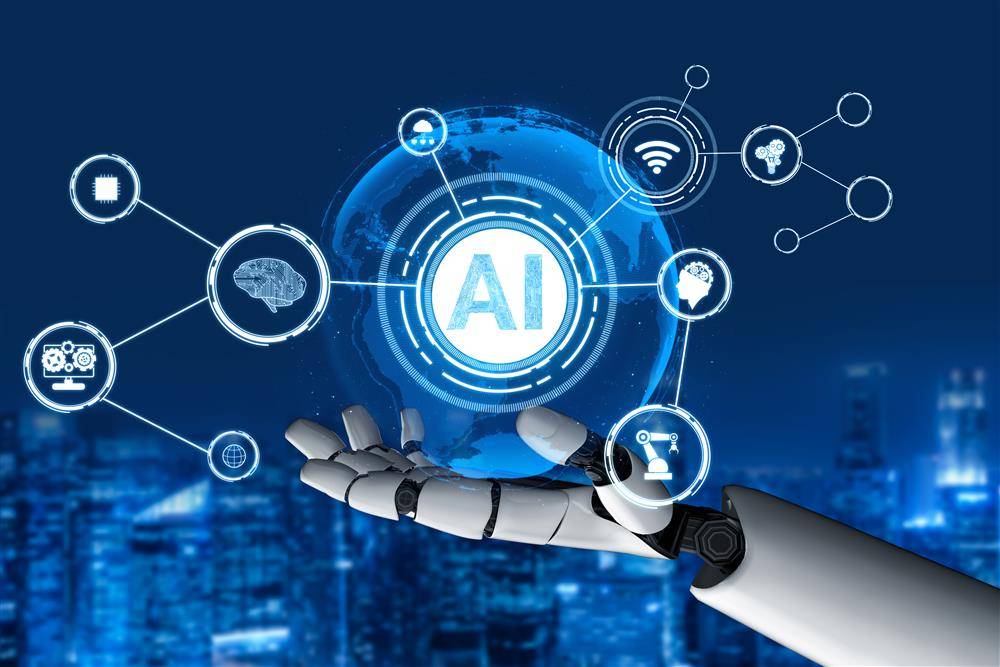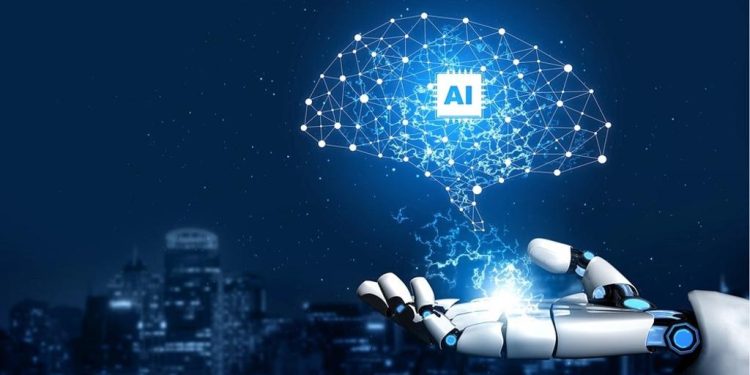The convergence of Blockchain and Artificial Intelligence (AI) has the potential to reshape entire industries, creating new business models, innovative solutions, and previously unimaginable trends. Both technologies, when applied independently, have demonstrated remarkable capabilities—blockchain with its secure, transparent, and decentralized framework, and AI with its ability to analyze large datasets and make intelligent decisions. However, when combined, they form a synergy that can enhance the power of both, leading to profound changes in how we operate, manage, and scale businesses.
In this article, we explore how the combination of blockchain and AI is opening up new industry trends, creating novel business models, and paving the way for the next generation of technological innovation.
1. Unlocking New Industry Trends: Blockchain Meets AI
A. Decentralized AI Networks
One of the most exciting developments in this intersection is the creation of decentralized AI networks. Traditionally, AI models are developed and operated by centralized entities such as tech giants (Google, Microsoft, etc.). These companies control vast amounts of data and computing power, which can lead to issues of monopolization, data privacy concerns, and unequal access to AI capabilities.
Blockchain can decentralize the development and deployment of AI models. With blockchain, AI services can be provided on decentralized platforms, where data and computations are distributed across a network of participants rather than being controlled by a central authority. This approach can reduce barriers to entry, enabling smaller companies or individuals to participate in AI-driven ecosystems without relying on big corporations.
B. Trustworthy AI and Transparency
AI algorithms are often seen as “black boxes” because their decision-making processes are not easily interpretable by humans. This lack of transparency raises concerns about bias, ethics, and accountability—issues that have become more prominent in AI applications like facial recognition, hiring, and credit scoring.
Blockchain can address these concerns by making AI’s decision-making processes auditable and transparent. Since blockchain’s ledger is immutable and transparent, it can record every decision or action taken by an AI system. This creates an audit trail that can be reviewed to ensure that AI systems are acting ethically and without bias. The integration of blockchain allows for greater accountability and trustworthiness in AI applications, especially in critical sectors such as healthcare, finance, and law enforcement.
Example:
Ocean Protocol, a blockchain-based data exchange platform, allows individuals and organizations to securely share and access AI-trained data. This decentralization makes it possible for smaller companies to contribute to AI model development and ensures that data usage is transparent and fair.
2. New Business Models Enabled by Blockchain and AI
The fusion of blockchain and AI also promises to disrupt existing business models and create entirely new ones. By combining the intelligence of AI with the security and transparency of blockchain, businesses can unlock value in ways that were previously impossible.
A. AI-Powered Smart Contracts
Smart contracts are self-executing contracts where the terms of the agreement are directly written into code. While blockchain already enables these contracts to be executed automatically, AI can take them to the next level by making them smarter and more adaptive.
AI can allow smart contracts to become self-learning. For example, an AI-powered smart contract could analyze real-time market data or assess performance metrics and automatically adjust contract terms (such as pricing or delivery dates) based on predefined conditions. This level of adaptability can be used in industries like supply chain management, real estate, and financial services.
Example:
In insurance, AI-powered smart contracts could adjust premiums or payouts in real-time based on factors like driving behavior (for car insurance), or environmental factors (for crop insurance), ensuring a more dynamic, personalized experience for customers.
B. Decentralized Autonomous Organizations (DAOs) with AI
Blockchain technology is already enabling the rise of Decentralized Autonomous Organizations (DAOs)—organizations that are governed by smart contracts rather than human leaders. These DAOs operate through rules encoded on a blockchain, ensuring decentralized decision-making, transparency, and autonomy.
AI could revolutionize DAOs by enabling intelligent governance. AI could be used to analyze data from multiple sources to make data-driven decisions within DAOs, such as proposing new initiatives or adapting strategies based on performance data. In this scenario, DAOs could operate with AI-based decision-making capabilities that are both autonomous and transparent, ensuring that the collective intelligence of the organization can drive business growth without centralized control.
Example:
Aragon and MolochDAO are examples of decentralized autonomous organizations built on blockchain that could integrate AI to enhance decision-making. For instance, an AI algorithm could help analyze the effectiveness of proposals and recommend optimal governance structures for the DAO.
C. AI-Enhanced Tokenomics and Crypto-Economics
Tokenomics refers to the economic system behind cryptocurrencies and blockchain-based tokens. The integration of AI can create more dynamic and responsive cryptoeconomies by allowing for real-time analysis and optimization of token flows, incentives, and rewards.
AI can help predict market behavior and adjust token distributions, offering solutions for issues such as liquidity management, market manipulation, and price volatility in decentralized finance (DeFi) ecosystems. Additionally, AI could be used to automate reward systems based on individual or collective user behavior, making token-based economies more efficient and user-friendly.
Example:
MakerDAO, which governs the DAI stablecoin, could use AI to optimize the stability mechanism of DAI by adjusting collateralization ratios in real-time based on market volatility, ensuring that the system remains stable even during extreme market fluctuations.

3. Industry-Specific Applications of Blockchain and AI
A. Healthcare: Improved Data Sharing and AI Diagnostics
In the healthcare industry, the combination of blockchain and AI can offer powerful solutions for data sharing and medical diagnostics.
- Data Sharing: Blockchain can store patient records in a secure, decentralized manner, giving patients control over their data. AI can then analyze this data to provide personalized treatment recommendations and detect health issues before they become critical.
- AI Diagnostics: Blockchain can ensure the integrity of AI-generated diagnostic results, making them verifiable and secure. By integrating AI with blockchain, healthcare providers can have access to secure, accurate, and transparent medical data that supports better decision-making.
Example:
MedRec, a blockchain-based platform, is already working to provide patients with greater control over their health data. By integrating AI, MedRec could enable the analysis of medical records to improve diagnosis and treatment plans.
B. Supply Chain and Logistics: Enhanced Tracking and Predictive Analytics
In the supply chain and logistics industry, blockchain provides transparency by recording every step in the journey of a product from manufacturer to consumer. AI can be used to enhance this process by applying predictive analytics to optimize inventory management, route planning, and demand forecasting.
Blockchain ensures that the data captured by AI models remains immutable and verifiable, making it easier to trace goods and assess risks. This combination can lead to more efficient, resilient, and sustainable supply chains.
Example:
IBM’s Food Trust platform uses blockchain to track food products across the supply chain. With AI integration, the platform could analyze historical data to predict supply chain disruptions, optimize logistics, and ensure that food safety standards are met.
4. Security and Privacy: Safeguarding AI Systems
While AI has immense potential, its use in sectors such as finance, healthcare, and law enforcement raises concerns about privacy and security. AI systems can be vulnerable to attacks such as data poisoning (where malicious data is used to influence AI models) and model inversion (where attackers can reverse-engineer sensitive information from AI models).
Blockchain can enhance the security of AI systems by providing a secure and immutable record of data transactions and AI model updates. Additionally, blockchain can create decentralized data marketplaces where AI models can be trained on secure, anonymized data, reducing the risks of data breaches and ensuring that sensitive information is protected.
A. Secure AI Training
AI models require vast amounts of data to train effectively. Blockchain can help by ensuring that the data used for training is not only secure but also authentic. Blockchain can record the provenance of data, ensuring that only high-quality and verified data is used to train AI models, improving both security and model accuracy.
Example:
SingularityNET is a decentralized platform for AI services, enabling individuals and organizations to buy and sell AI models. Using blockchain, SingularityNET ensures that all transactions are transparent and secure, and that data used for AI training is trusted.
Conclusion: A New Horizon of Possibilities
The combination of Blockchain and Artificial Intelligence is creating a fertile ground for innovation, bringing new trends, business models, and industry applications. From decentralized AI networks to AI-powered smart contracts, the possibilities are vast. By enabling more secure, transparent, and autonomous systems, this powerful convergence is opening doors to more efficient, ethical, and user-centric solutions.
Businesses that are early adopters of blockchain and AI integration will be at the forefront of transforming industries, from healthcare and supply chain to finance and governance. As these technologies continue to evolve, they will unlock new paradigms, offering businesses innovative ways to create value, improve decision-making, and drive growth.
Ultimately, the synergy between blockchain and AI promises not only to redefine business practices but also to usher in an era of intelligent, decentralized, and privacy-conscious technologies that will shape the future of industries across the globe.
















































